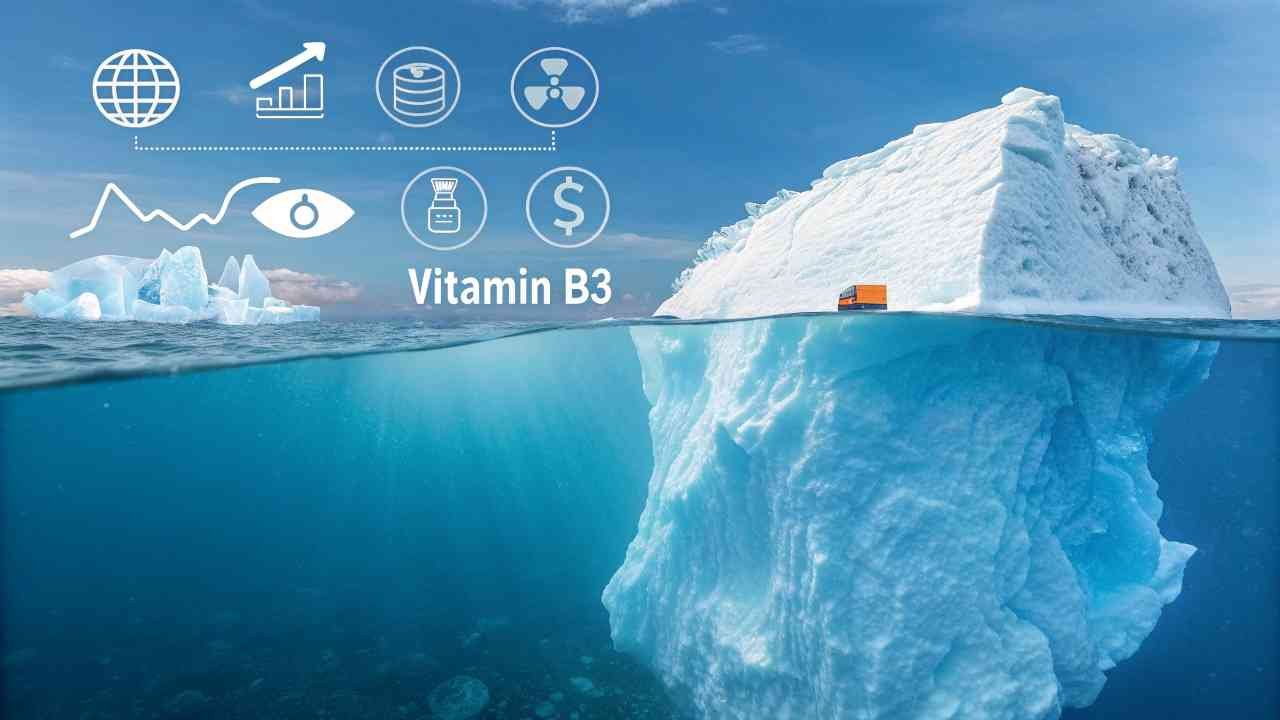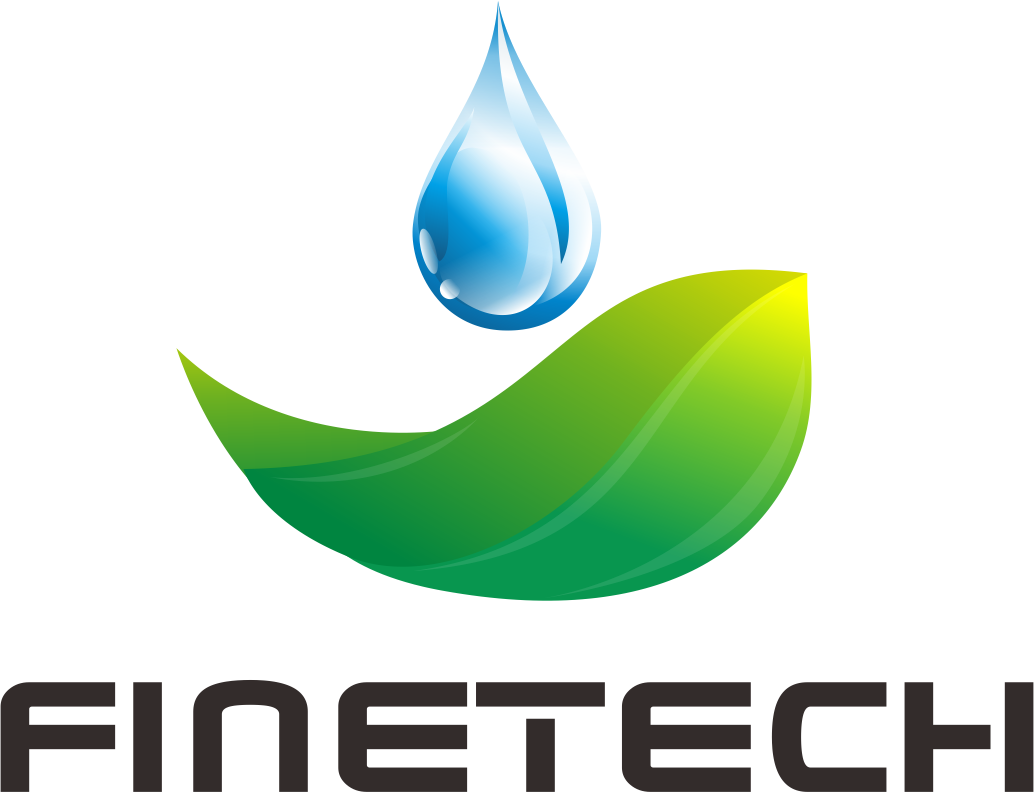Choosing between niacin and niacinamide? Worried the wrong choice could hurt your budget? Let's clarify the true costs of Vitamin B3.
Niacin is often cheaper per kilo, but niacinamide's better stability and no-flush side effect can lower the total cost by reducing waste and protecting your brand.
In my work at FINETECH, I help clients source smart. As my client always says, "The purchase price is only the beginning." For Vitamin B3, the choice between niacin and niacinamide has costs that go beyond the initial quote. Let's break it down.
How do bulk purchase prices for Niacin and Niacinamide usually differ?
See a price gap between niacin and niacinamide quotes? Wondering why one is consistently cheaper? Let's explain the price difference.
Generally, niacin (nicotinic acid) has a lower bulk price. This is because its manufacturing process is often simpler and more direct than the process for making niacinamide.

The price difference comes down to the manufacturing process.
- Niacin: Is made with a more straightforward chemical process. It's efficient and optimized for high volume.
- Niacinamide: Often requires an extra step, like converting niacin into niacinamide. More steps mean higher production costs.
Even though both are high-volume commodity vitamins, this basic production difference keeps niacin's purchase price lower.
Price Difference Summary:
| Feature | Niacin (Nicotinic Acid) | Niacinamide (Nicotinamide) | Impact on Price |
|---|---|---|---|
| Manufacturing | Simpler process | More complex process | Niacin is cheaper to make. |
| Relative Price | Lower | Higher | Reflects production cost. |
This lower price for niacin is just the start of your cost calculation.
What indirect costs affect the total Vitamin B3 expense?
Bought the cheaper niacin? Worried about hidden expenses? Let's uncover the indirect costs that affect your total Vitamin B3 spending.
Indirect costs include adding extra vitamin (overage) to cover stability loss, managing consumer complaints from the "niacin flush," formulation adjustments, and supply chain risks like delays.

The purchase price is just one part of the total cost. Here are the other costs to watch for:
- Overage: You add extra vitamin to ensure your label claim is met at the end of shelf life. Niacinamide is often more stable, so it may require less overage than niacin, saving you material.
- The "Niacin Flush1": Niacin can cause skin redness and tingling. Niacinamide does not. The "flush" leads to customer complaints, returns, and brand damage – a huge potential cost.
- Formulation Headaches: Niacin is an acid and can change a product's pH, requiring other ingredients (like buffers) to fix it. Niacinamide is neutral.
- Supply Chain Risks2: A cheap price from an unreliable supplier can lead to delays or quality issues, which can shut down your production line. This is a major pain point for clients that we at FINETECH help prevent.
Indirect Cost Factors:
| Factor | Niacin Impact | Niacinamide Impact | Business Consequence |
|---|---|---|---|
| Overage | May need more | Often needs less | Material cost |
| Side Effects | High risk of "Niacin Flush" | No Flush | Brand damage, returns |
| Formulation | Acidic, may need buffers | Neutral, no pH impact | Added ingredient cost |
| Supply Risk | High with poor suppliers | High with poor suppliers | Production delays |
These indirect costs can easily make the "cheaper" option more expensive overall.
How can manufacturers use Vitamin B3 efficiently to meet fortification targets on a budget?
Need to fortify with B3 on a tight budget? Wondering how to be efficient? Let's review some smart strategies.
To be efficient, match the B3 form to your product, calculate overages precisely, use premixes to simplify, and partner with a reliable supplier for competitive pricing and guaranteed quality.

Efficiency is about making smart choices, not just cutting costs.
- Match Form to Application:
- Niacin: Good for dry, stable products like flour where flush risk is low.
- Niacinamide: Better for liquids, high-heat products, or any supplement where the "flush" is a risk.
- Optimize Overage3: Don't guess. Test your product's stability to find out exactly how much overage you truly need. This prevents wasting vitamins.
- Consider Premixes: If you use multiple vitamins, buying a pre-blended mix can simplify sourcing, reduce inventory, and improve accuracy in production.
- Strategic Sourcing4: A good supplier like FINETECH provides more than a low price. We guarantee quality and on-time delivery, which prevents much larger costs from production issues.
Efficiency Strategies:
| Strategy | Description | Budget Impact |
|---|---|---|
| Match to App | Use niacin for simple jobs, niacinamide for complex. | Prevents overspending. |
| Precise Overage | Use stability data to calculate needs. | Minimizes waste. |
| Use Premixes | Combine many vitamins into one ingredient. | Simplifies operations, can lower total cost. |
| Strategic Sourcing | Partner with a reliable supplier. | Lowers price and mitigates expensive risks. |
Is choosing a more stable Vitamin B3 form a good long-term investment?
Tempted to save money now with a less stable form? Does paying more for stability pay off? Let's look at the long-term value.
Yes, choosing a stable form like niacinamide is a great long-term investment. It protects your brand reputation, ensures your label claim is accurate, and prevents costly waste or recalls.

Thinking long-term is smart purchasing. A stable vitamin5 is like insurance for your product.
- It Protects Your Label Claim: A stable vitamin ensures your product meets its nutritional promise at the end of its shelf life. Failing a test can mean writing off entire product lots.
- It Prevents Recalls: A recall is one of the most expensive things that can happen. The cost of a stable vitamin is tiny compared to the cost of a recall due to a failed label claim.
- It Preserves Your Brand: Using flush-free niacinamide6 shows you care about your customers' experience. This builds trust and brand loyalty, which is priceless.
The higher upfront cost for stability protects you from much larger future costs.
How can businesses analyze the overall cost-benefit of their Vitamin B3 choices?
Need a clear way to analyze your B3 choice? Want a framework to justify your decision? Here is how to do it.
Businesses should use a Total Cost of Use (TCU) analysis. This framework calculates the purchase price PLUS all indirect costs like overage, formulation adjustments, and potential risk costs.

Make a data-driven decision. Don't just look at the price per kilo.
Total Cost of Use = Purchase Price + Overage Cost + Risk Cost
- Purchase Price: The price on the quote.
- Overage Cost: The cost of the extra vitamin you need to add for stability. A less stable form needs more.
- Risk Cost: Estimate the cost of customer complaints or returns from the niacin flush. This is often significant for niacin and zero for niacinamide.
Example TCU Analysis:
| Cost Component | Niacin (Cheaper Price) | Niacinamide (Higher Price) |
|---|---|---|
| 1. Purchase Cost | $10,000 | $12,000 |
| 2. Overage Cost | $2,000 (Higher %) | $1,200 (Lower %) |
| 3. Risk Cost | $1,500 (Flush risk) | $0 (No flush) |
| TOTAL COST OF USE | $13,500 | $13,200 |
In this example, niacinamide is the cheaper option in total, even with a higher purchase price. This analysis gives you the true picture.
Conclusion
The true cost of Vitamin B3 goes beyond the initial price. Considering stability, side effects, and application is key. A total cost analysis often shows niacinamide is a better investment.
-
Learn about the Niacin Flush to understand its impact on customer satisfaction and product formulation, helping you make informed choices. ↩
-
Discover strategies to manage supply chain risks effectively, ensuring smooth production and high-quality products in your business. ↩
-
Learn how to effectively optimize vitamin overage to prevent waste and ensure product stability in your production process. ↩
-
Discover how strategic sourcing can enhance your supply chain efficiency and reduce production costs while ensuring quality. ↩
-
Explore how stable vitamins can enhance product quality and customer trust, ensuring long-term success. ↩
-
Discover the advantages of flush-free niacinamide for better customer satisfaction and brand loyalty in skincare products. ↩


